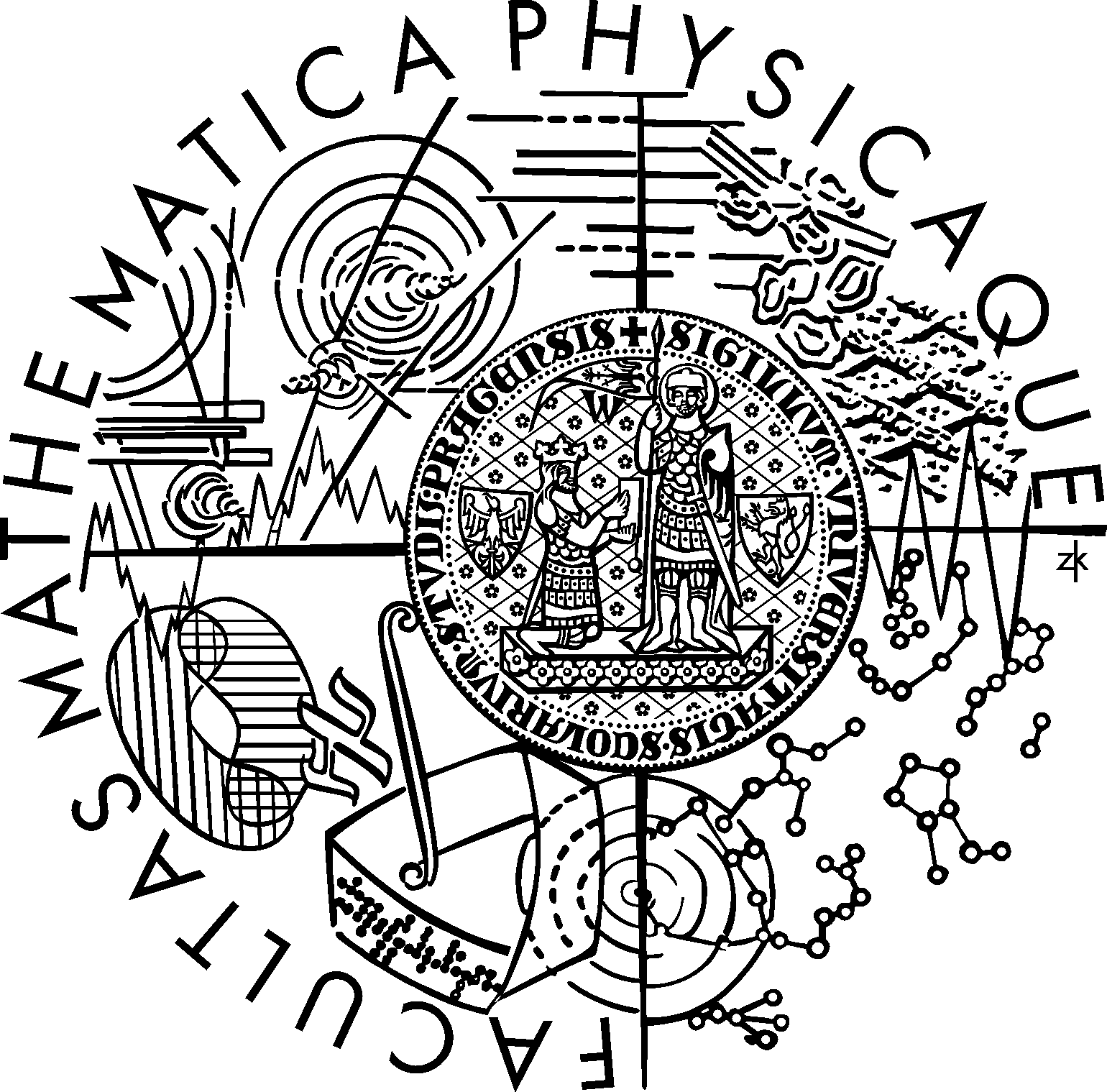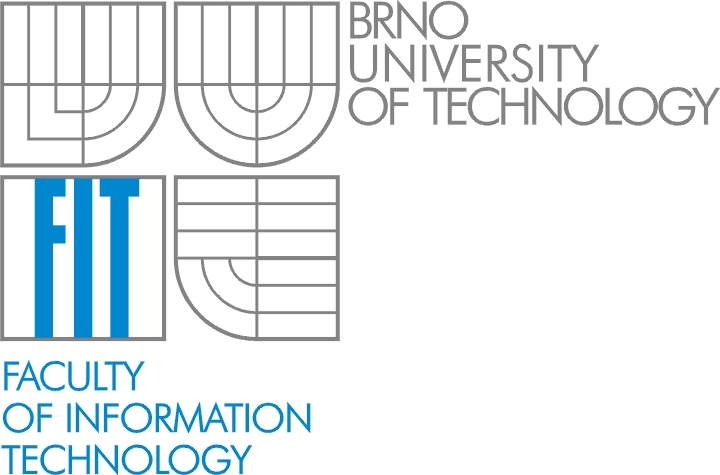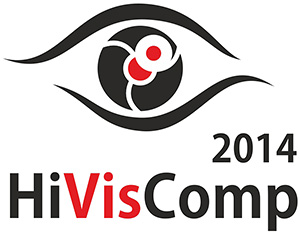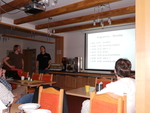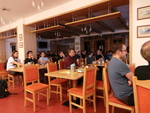High Visual Computing 2014
The first meeting of the Czech and Slovak computer graphics and computer vision people in the mountains. The event will take place on 2. - 5.2.2014 in Krkonoše mountains in a nice hut:
http://www.richtrovyboudy.cz/ (see the map).
There will be many outdoor activities possible during the day and fruitful talks, discussions and socializing in the afternoons and evenings. The expected price is around 90 EUR per person (3 nights incl. half board and transport to the hut from the valley). Please let us know if you are interested to attend the event (please provide also your talk proposal).
Programme:
2.2.2014 Sunday:
- 14:00
- optional socializing outdoors
- 18:00
- dinner
- 19:00
- welcome
- 19:10
- invited talk 1: Jiří Matas, CTU in Prague, Czech Republic: Robust Short- and Long-Term Visual Tracking
- 20:00 - 20:50
- talks 1 - 2:
- Ivan Viola: Perceptual-Statistics Shading Model
- Filip Šroubek: Advances in blind image restoration
- 20:50 - 02:00
- socializing indoors
3.2.2014 Monday:
- 8:00 - 10:00
- breakfast
- 10:00 - 17:00
- socializing outdoors
- 17:00 - 18:15
- talks 3 - 5:
- Martin Fuchs: Image processing in astronomy: science or creative art?
- Barbora Kozlíková: Geometry based analysis of complex protein structures
- Markéta Dubská: Detection of orthogonal vanishing points
- 18:15 - 19:10
- dinner
- 19:10 - 20:00
- invited talk 2: Brian Barsky, UC Berkeley, USA: Vision Realistic Rendering
- 20:00 - 20:50
- talks 6 - 7:
- Jiří Bittner: How to make the most of your bounding volume hierarchies?
- Ondřej Karlík: Corona - photorealistic renderer for end users
- 21:00 - 22:00
- presentations of Czech and Slovak research groups
- 22:00 - 02:00
- socializing indoors
4.2.2014 Tuesday:
- 8:00 - 10:00
- breakfast
- 10:00 - 17:00
- socializing outdoors
- 17:00 - 18:15
- talks 8 - 10:
- Adam Hotový: Architectural visualization in praxis
- Ila Viorela: Modern optimization techniques for 3D reconstruction
- Lukáš Hošek: Atmospheric rendering
- 18:15 - 19:10
- dinner
- 19:10 - 20:00
- invited talk 3: TBA
- 20:00 - 20:50
- talks 11 - 13:
- Vladimír Nejedlý: Procedural generation in praxis
- Martin Ilčík: Challenges in grammar-based procedural modeling of interiors
- Oskar Elek: Interactive simulation of light scattering in participating media
- 20:50 - 02:00
- socializing indoors
Invited Speakers:
Speaker 1: Jiří Matas, CTU in Prague, Czech Republic
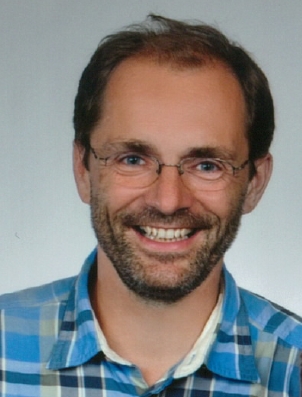
Jiří Matas is a full professor at the Center for Machine Perception, Czech Technical University in Prague (CTU). He holds a PhD degree from the University of Surrey, UK (1995). He has published more than 200 papers in refereed journals and conferences. His publications have approximately 5000 citations in the ISI Thomson-Reuters Science Citation Index and about 15500 in Google scholar. His h-index is 25 (ISI) and 46 (Google scholar) respectively.
He received the best paper prize at the British Machine Vision Conferences in 2002 and 2005, at the Asian Conference on Computer Vision in 2007 and at the Scandianavian Conference on Image Analysis in 2013. His student received a number of awards, e.g. Best Student paper at ICDAR 2013, Google Fellowship 2013, and various "Best Thesis" prizes. For details, see http://cmp.felk.cvut.cz/~matas.
J. Matas has served in various roles at major international conferencs (e.g. ICCV, CVPR, ICPR, NIPS, ECCV), co-chairing ECCV 2004 and CVPR 2007. He is on the editorial board of IJCV and was the Associate Editor-in-Chief of IEEE T. PAMI. He is a member of the ERC Computer Science and Informatics Starting Grants panel.
His research interests include object recognition, image retrieval, tracking, sequential pattern recognition, invariant feature detection, and Hough Transform and RANSAC-type optimization.
He is a co-founder of Eyedea recognition, http://www.eyedea.cz/, the first CTU spin-off. He is a co-inventor of several patents.
Robust Short- and Long-Term Visual Tracking
Visual Tracking is a very broad topic with application ranging from surveillance to augmented reality. Its methods include ultra-fast rigid patch matchers as well as complex articulated or non-rigid body pose estimators.
In the talk, I will briefly discuss possible formulations of the tracking task and explore the major axes of the "tracker space", including a discussion of recent Visual Object Tracking Challenge results, http://votchallenge.net/ One of the best performing trackers - the Flock-of-Trackers (FOT) - will be analyzed in detail, focussing on the techniques supporting its robustness. Time permitting, long term tracking will be demonstrated on the Tracking-Learning-Detection (TLD) tracker.
Speaker 2: Brian Barsky, UC Berkeley, USA
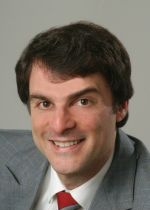
Brian A. Barsky is Professor of Computer Science and Vision Science, and Affiliate Professor of Optometry, at the University of California at Berkeley, USA. He is also a member of the Joint Graduate Group in Bioengineering, an interdisciplinary and inter-campus program, between UC Berkeley and UC San Francisco, and a Fellow of the American Academy of Optometry (F.A.A.O.).
Professor Barsky has co-authored technical articles in the broad areas of computer aided geometric design and modeling, interactive three-dimensional computer graphics, visualization in scientific computing, computer aided cornea modeling and visualization, medical imaging, and virtual environments for surgical simulation. He is also a co-author of the book An Introduction to Splines for Use in Computer Graphics and Geometric Modeling, co-editor of the book Making Them Move: Mechanics, Control, and Animation of Articulated Figures, and author of the book Computer Graphics and Geometric Modeling Using Beta-splines.
Professor Barsky also held visiting positions in numerous universities of European and Asian countries. He is also a speaker at many international meetings, an editor for technical journal and book series in computer graphics and geometric modelling, and a recipient of an IBM Faculty Development Award and a National Science Foundation Presidential Young Investigator Award. Further information about Professor Barsky can be found at http://www.cs.berkeley.edu/~barsky/biog.html.
Vision Realistic Rendering
Vision-realistic rendering (VRR) is the computer generation of synthetic images to simulate a subject's vision, by incorporating the characteristics of a particular individual’s entire optical system. Using measured aberration data, VRR modifies input images to simulate the appearance of the scene for the individual patient. Each input image can be a photograph, synthetic image created by computer, frame from a video, or standard Snellen acuity eye chart -- as long as there is accompanying depth information. An eye chart is very revealing, since it shows what the patient would see during an eye examination, and provides an accurate picture of his or her vision.
VRR provides images and videos of simulated vision to enable a patient's eye doctor to see the specific visual anomalies of the patient. In addition to blur, VRR could reveal to the doctor the multiple images or distortions present in the patient's vision that would not otherwise be apparent from standard visual acuity measurements. VRR could educate medical students as well as patients about the particular visual effects of certain vision disorders (such as keratoconus and monocular diplopia) by enabling them to view images and videos that are generated using the optics of various eye conditions.
By measuring PRK/LASIK patients pre- and post-op, VRR could provide doctors with extensive, objective, information about a patient's vision before and after surgery. Potential candiates contemplating surgery could see simulations of their predicted vision and of various possible visual anomalies that could arise from the surgery, such as glare at night. The current protocol, where patients sign a consent form that can be difficult for a layperson to understand fully, could be supplemented by the viewing of a computer-generated video of simulated vision showing the possible visual problems that could be engendered by the surgery.
Important Dates:
- Deadline for talk proposals: 30th November, 2013
- Meeting: 2-5th February, 2014
Venue:
Car parking in Pec pod Sněžkou (Centrální parkoviště): 100CZK/day. The costs will be paid by each participant personally at the hut
Programme and Organization Committee:
Martin Čadík, Jaroslav Křivánek
Duties: scientific program, selection of beer and everything else.
Sponsoring:
